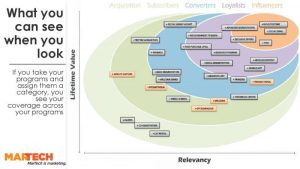Why spend all your time fixing bugs in your weekly newsletter? Columnist Andrew King believes a good template system can decrease the hours you spend testing and fixing errors.

The email design and coding process is broken for many companies. Email marketers are spending a disproportionate amount of their lives trying to figure out why Gmail has absolutely destroyed their HTML, rather than working on the things that can actually make a measurable impact on the performance of their email program.

A common scenario in the email coding world. Source: Email on Acid
This is what the traditional email design and coding process looks like for many companies:
- Gather images and copy for your campaign.
- Add your text and images directly to your HTML template through one of the various email-friendly editors (Litmus Builder, Sublime Text, Coda, CoffeeCup, Dreamweaver, etc.).
- Test your HTML in an email-testing tool such as Litmus or Email on Acid.
- Fix all of the bugs that you discovered in Outlook, Gmail and Android.
- Send to the marketing manager for approval.
- Make updates to the copy and the weird image spacing that they see on their version of Outlook 2003.
- Send another test.
- Get approval.
- Freak out before clicking “send.”
Total time: 10+ hours.
If this sounds like an excessively long process, it is! And to be fair, 10+ hours is an extreme, but entirely possible, scenario — especially if you have to spend a few hours fixing rendering errors in various email clients.
The Advantages Of Using A Template Builder
The good news is that it doesn’t have to be this way. By using a template builder or system, you can pretty much remove steps 3 and 4 from that list and save yourself a tremendous amount of time by not having to constantly test each campaign for rendering errors.
Yes, I understand that you may lose some flexibility if you move to a template builder, and I’m also very aware that not all template builders are created equal — in fact, many are terrible, and you should stay away from them!
What I am saying is that a good email template system should allow you to do 80% to 90% of what you want to do and take less than half the time it takes to code an email by hand, giving you plenty of time to concentrate on the effectiveness of your program and the many other aspects of email marketing which matter most to your subscribers:
- Strategy development
- Testing
- Relevant content
- List growth
- Automation
- Analysis
Don’t get me wrong — I absolutely love all of the amazing things that the #Emailgeek community creates on a regular basis, and I think there is definitely still a lot of room for innovative, bleeding-edge stuff.
I just think that on a day-to-day basis, there is no need to be fiddling about with Outlook, Gmail or Android bugs in your weekly newsletter. Ain’t nobody got time for that!
Even large companies like Microsoft and Apple have trouble getting their emails to look good across the vast array of email clients and devices:

As you can see above, Microsoft appears to be having a few issues with this email rendering correctly within its own client.

Some odd things are happening in this Apple email.
Does this mean that we should all just pack up shop and never code another email again? NOOOOOOO, that’s not what I’m saying at all. I can’t get enough of innovative email designs like this:

The Nest email features a sliding carousel and interactive navigation. See it in action here.
Or this:

The above email from Lego also features an interactive carousel. See it here.
It’s my personal view that there are many solutions out there that will allow you to very quickly build a beautiful looking email with minimal rendering errors and in half the time it would take to code/update an email by hand.
This is what your email deployment process should look like for your day-to-day campaigns:
- Gather images and copy for your campaign.
- Insert images and copy into your template.
- Send to the marketing manager for approval.
- Make updates to the copy. (This is always going to happen!)
- Send another test.
- Get approval.
- Freak out before clicking “send.”
Total time: 3-5 hours
This doesn’t mean that you will never, ever have to test an email again once you have a good template system in place; it just means that the amount of time that you have to spend testing and fixing errors will be dramatically decreased.
Have you optimized your email deployment process with a template system? Please share with us your process and any tips that you have.
Some opinions expressed in this article may be those of a guest author and not necessarily Marketing Land. Staff authors are listed here.
(Some images used under license from Shutterstock.com.)
Marketing Land – Internet Marketing News, Strategies & Tips
(258)









